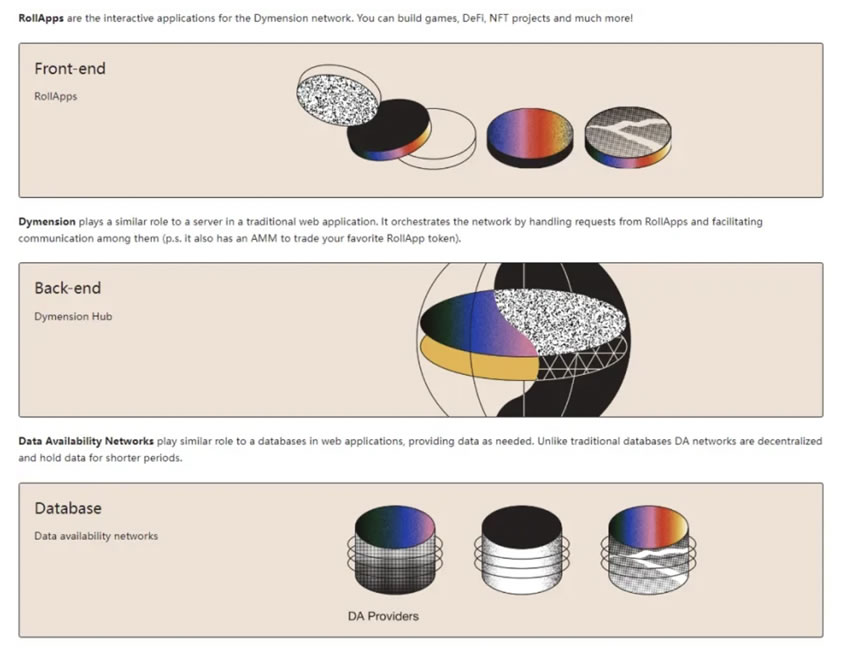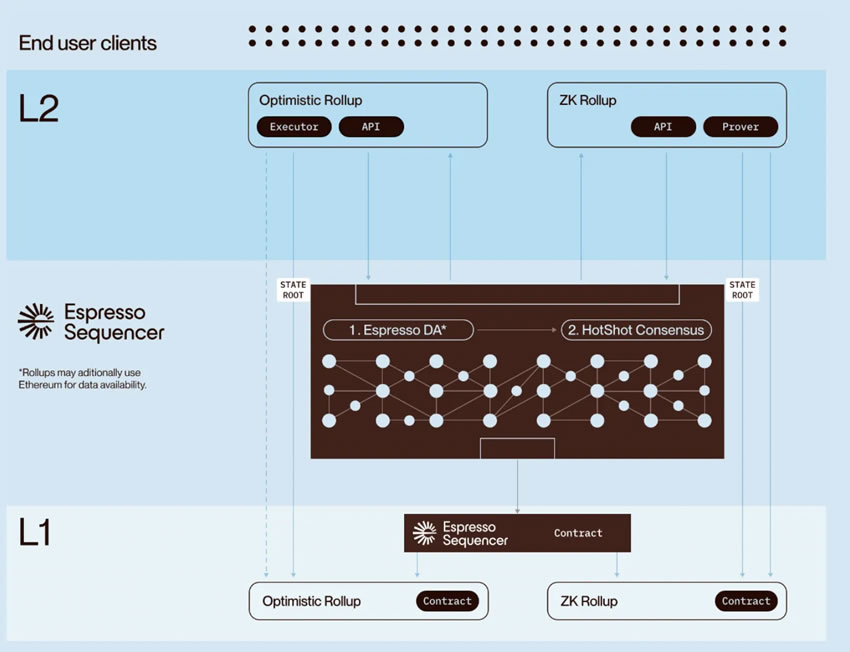After conducting in-depth research on the sector, it is confirmed that modularization is a must-have position in the bull market.
The key to this bull market lies in widespread application. Whether it is the large-scale adoption of layer2 technology, the upgrade of the Cancun network, or the development of high-performance public chains such as Sui and APT, all are to attract more Many Web2 users are involved.
Modularization is the infrastructure for large-scale applications and is also essential. In the 21st century, Cosmos proposed the concept of Appchain, a vision that will be realized through modularity. Modularity reduces the cost of creating a chain, simplifies the process, and allows for flexible creation based on demand.
Raas's service provider can maintain a modular public chain for a monthly fee of 3000U, and also provides various infrastructure, including blockchain browsers, cross-chain bridges, data APIs, etc., without even having to Write code.
As mentioned in the article "Modularization is Rising", more and more Dapp developers are currently choosing to build independent blockchains as the basis for their applications. The reason behind this trend is not only the ability to customize exclusive public chains for applications, but also the fact that it helps build an independent ecosystem. From a profit perspective, the growth potential of the market value of an independent public chain far exceeds the market value of a single Dapp.
Celestia is one of the most important roles in modular architecture. Celestia focuses on the DA layer and consensus layer. Developers can let Celestia be responsible for DA, let Ethereum or other public chains be responsible for consensus and settlement, and execute it themselves. Or let Celestia act as DA and consensus, and itself act as settlement and execution. Celestia Labs has launched Blobstream, which delivers Celestia’s modular data availability layer to Ethereum. The promise of using on-chain light clients to relay Celestia data roots enables Ethereum developers to create high-throughput L2s as easily as they develop smart contracts.
Among the four layers: consensus layer, execution layer, settlement layer, and data availability layer, the DA layer has the greatest demand. Otherwise, Ethereum would not go to great lengths to do the Cancun upgrade to reduce the cost of DA. According to other people's tests, even if Blob greatly reduces the gas cost of Layer 2 after the Cancun upgrade, it is still dozens of times more expensive than using Celestia.
From a practical point of view, Celestia, as the DA layer with the highest product integrity, highest reputation, and largest market value, is the first choice of many layer2s, and Celestia pledged users are targeted for airdrops, allowing Celestia to start a positive spiral.
Dymension is usually regarded as a settlement layer module, but it can also be used as a Raas service provider. Through Dymension, RollApp’s public chain can be built.
The core product Dymension RDK is the Cosmos SDK customized for RollApps. The Cosmos SDK is a development kit that comes pre-installed with several modules to speed up the build process. Additional smart contract frameworks have also been developed and deployed, produced under different licenses:
Ethermint: EVM Smart Contracts
CosmWasm: The Wasm framework built by Confio and Cosmos contributors
Dymension has an embedded AMM that acts as a centralized liquidity layer for the RollApp ecosystem. The AMM supports features such as cross-RollApp swapping, efficient token bootstrapping, and provides access to protocol incentives.
Compared with other modularizations, Dymension is more difficult to develop, especially for the Ethereum-based layer 2, which is not dominant, but it is more malleable. Judging from the results, although officially more than 1,000 RollApps have been deployed. However, according to our investigation, the TVL of the leading Rollapp is only a few million US dollars, and the daily activity is only double digits. Therefore, there is still a lot of room for progress in the development of the Dymension ecosystem.

At the execution level, Fuel plays a very important role. Through its original FuelVM, Fuel implements improvements proposed over the years to the Ethereum VM (EVM) without sacrificing backwards compatibility, including parallel transaction execution and support for multiple native assets. Fuel enables parallel execution of transactions in the form of a UTXO model using strict state access lists. As a result, Fuel can deliver more computation, state access, and transaction throughput than its single-threaded counterpart.
Eclipse is another important role in execution layer modularization. Its plan is to bring Solana Virtual Machine (SVM) into Ethereum so that Ethereum can have the functions of Solana. performance. Its specific structure is:
Settlement layer - Ethereum: Eclipse will settle to Ethereum (i.e., the embedded verification bridge on Ethereum) and use ETH as its Gas consumption, and the fraud proof will also Submitted on Ethereum;
Execution layer - Solana Virtual Machine (SVM): Eclipse will run a high-performance SVM as its execution environment, a fork of the Solana Labs client (v1.17);
Data availability layer - Celestia: Eclipse will publish data to Celestia to achieve scalable data availability (DA);
Proof mechanism - RISC Zero: Eclipse will use RISC Zero for ZK fraud proof (no need Intermediate state serialization);
Communication protocol - IBC: Complete bridging with non-Eclipse chains through Cosmos' inter-chain communication standard IBC;
Cross-chain protocol - Hyperlane: Eclipse and Hyperlane cooperate to integrate Hyperlane's permissionless interoperability solution Introducing a blockchain based on Solana Virtual Machine (SVM).
Espresso is a decentralized sorter, although it is not one of the four major modules. But it's also very important. We know that the core of Layer2 is to uniformly package transaction rollup to Layer1. Then the sorting of transactions on Layer 2 is completed by the sorter, and the sorter has the right to let a transaction be packaged first, or not packaged. Now the sorter is basically controlled by the layer2 project side, which obviously violates the principle of decentralization. In the future, the use of decentralized sorters will become an inevitable trend.

#Espresso is a decentralized sequencer using the HostShot consensus mechanism. This may consist of thousands of heterogeneous nodes, with their own DA layer to store data. Espresso can achieve
1) Fast response to Rollup and final confirmation of transaction
2) The HostShot consensus mechanism used by Espresso can be expanded to tens of thousands of nodes and ensures strong performance.
3) Espresso’s Layer2 can realize express delivery and low-cost cross-chain communication.
Raas service provider integrates modularization and allows customers to issue chains on demand. It greatly simplifies the process of modular chain development and plays an important role in promoting large-scale modular application. The more important ones include Conduit, AltLayer, Caldera, Gelato, and Lumoz. Among them, Altlayer has the highest degree of integration. It integrates almost four major modular layers, as well as decentralized sequencers, interoperability protocols, etc. Conduit and Caldera are mainly on layer 2 and mainly support OP Stark and Arbitrum Orbit. But their advantages are very convenient and simple, and the price is also very low. And there are already some very well-known modular public chains, such as Conduit used by ZORA, AEVO, and Lyra, and Caldera used by Manta, Loot, and Injective.
The above is the detailed content of What is the logic behind the heavy positioning in the modular bull market?. For more information, please follow other related articles on the PHP Chinese website!




